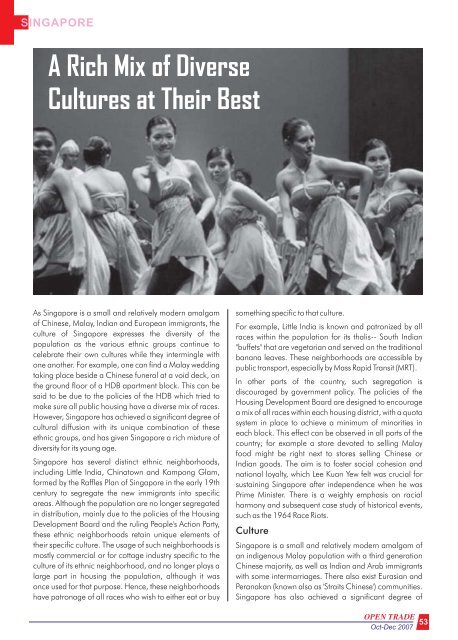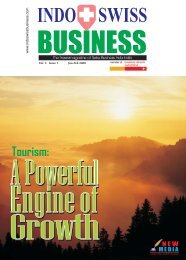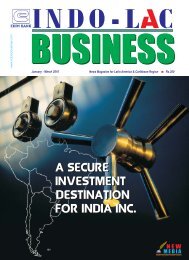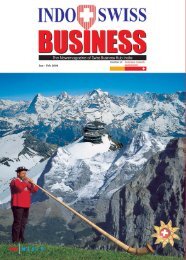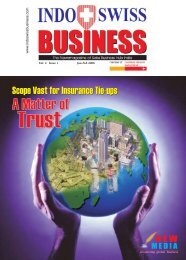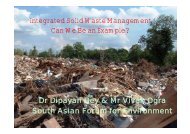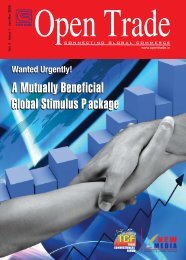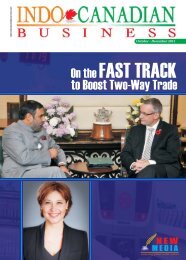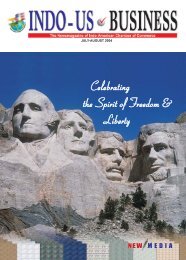pele SciaSction - new media
pele SciaSction - new media
pele SciaSction - new media
Create successful ePaper yourself
Turn your PDF publications into a flip-book with our unique Google optimized e-Paper software.
SINGAPORE<br />
A Rich Mix of Diverse<br />
Cultures at Their Best<br />
As Singapore is a small and relatively modern amalgam<br />
of Chinese, Malay, Indian and European immigrants, the<br />
culture of Singapore expresses the diversity of the<br />
population as the various ethnic groups continue to<br />
celebrate their own cultures while they intermingle with<br />
one another. For example, one can find a Malay wedding<br />
taking place beside a Chinese funeral at a void deck, on<br />
the ground floor of a HDB apartment block. This can be<br />
said to be due to the policies of the HDB which tried to<br />
make sure all public housing have a diverse mix of races.<br />
However, Singapore has achieved a significant degree of<br />
cultural diffusion with its unique combination of these<br />
ethnic groups, and has given Singapore a rich mixture of<br />
diversity for its young age.<br />
Singapore has several distinct ethnic neighborhoods,<br />
including Little India, Chinatown and Kampong Glam,<br />
formed by the Raffles Plan of Singapore in the early 19th<br />
century to segregate the <strong>new</strong> immigrants into specific<br />
areas. Although the population are no longer segregated<br />
in distribution, mainly due to the policies of the Housing<br />
Development Board and the ruling People's Action Party,<br />
these ethnic neighborhoods retain unique elements of<br />
their specific culture. The usage of such neighborhoods is<br />
mostly commercial or for cottage industry specific to the<br />
culture of its ethnic neighborhood, and no longer plays a<br />
large part in housing the population, although it was<br />
once used for that purpose. Hence, these neighborhoods<br />
have patronage of all races who wish to either eat or buy<br />
something specific to that culture.<br />
For example, Little India is known and patronized by all<br />
races within the population for its thalis-- South Indian<br />
"buffets" that are vegetarian and served on the traditional<br />
banana leaves. These neighborhoods are accessible by<br />
public transport, especially by Mass Rapid Transit (MRT).<br />
In other parts of the country, such segregation is<br />
discouraged by government policy. The policies of the<br />
Housing Development Board are designed to encourage<br />
a mix of all races within each housing district, with a quota<br />
system in place to achieve a minimum of minorities in<br />
each block. This effect can be observed in all parts of the<br />
country; for example a store devoted to selling Malay<br />
food might be right next to stores selling Chinese or<br />
Indian goods. The aim is to foster social cohesion and<br />
national loyalty, which Lee Kuan Yew felt was crucial for<br />
sustaining Singapore after independence when he was<br />
Prime Minister. There is a weighty emphasis on racial<br />
harmony and subsequent case study of historical events,<br />
such as the 1964 Race Riots.<br />
Culture<br />
Singapore is a small and relatively modern amalgam of<br />
an indigenous Malay population with a third generation<br />
Chinese majority, as well as Indian and Arab immigrants<br />
with some intermarriages. There also exist Eurasian and<br />
Peranakan (known also as 'Straits Chinese') communities.<br />
Singapore has also achieved a significant degree of<br />
OPEN TRADE 53<br />
Oct-Dec 2007


